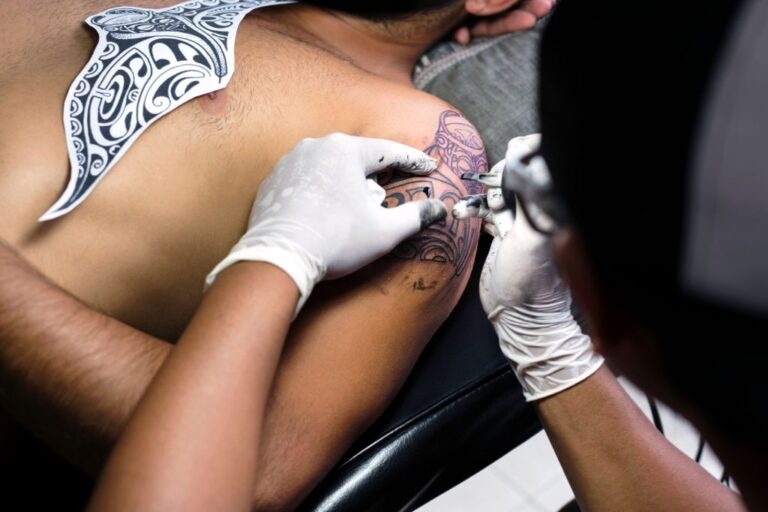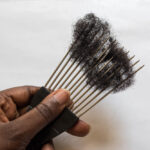A tattoo is a form of art where the canvas is your skin. The term tattoo literally means to mark something and, considering how tattoos are applied by puncturing the skin’s outer layer and inserting colors into its dermal layer, we can say that this definition is rather apt. Tattoos should be thought of as permanent, although some of the colors may fade over time.
The art of tattooing has been around for thousands of years, dating back to Africa, specifically ancient Egypt, about two thousand years before the pyramids were even built. In Latin America, the ancient Mayans were also known to have tattoos, as were the Aztecs and Incas. However, the Polynesians were the ones responsible for spreading the practice of tattooing across Southeast Asia, and then around the world, when they tattooed the sailors they encountered.
In ancient times, men and women got tattoos for a myriad of reasons. Sometimes, they got them as a sign of their occupation, or as a token of the gods they served. And other times, they got them for therapeutic reasons. Over time, skin art has evolved into a way for men and women to express their individuality and uniqueness. And for today’s urban vixen, tattooing is a medium by which she can communicate her allure, sensuality, or even her devotion to something or someone that she cares about.
In addition to body art, tattoos are used for cosmetic and reconstructive purposes; from permanent make-up (eyeliner and lip liner, for example), to camouflage for unsightly scars and replacement of the areolas in mastectomy patients.
There are many different ways to obtain a tattoo. Originally, this process required one or more needles fixed to a stick and driven into the skin by slightly tapping. The Polynesian taping sound – Tau Tau – is what led to the original name “tattoo”. Currently, tattooing is usually performed with an electric-powered needle or gun. But whether you opt for the old-fashion methods or the modern techniques your skin will still be punctured with a sharp instrument, and there are risks.
Factors like allergic reactions to the types of ink used, the state of the needle, hygienic condition of the tattooing station, and the efficiency of the tattoo artist may place a person who has just gotten a tattoo at a very high potential for a number of skin reactions. Some of these reactions are immediate, but others may not present themselves for years. The most common ones among them are:
- Eczematous reactions
These hypersensitivity reactions are red, itchy and scaly patches that are usually localized to the tattoo site. The symptoms of eczematous reactions may also include swelling of the skin. However, all of this can be treated with topical steroid creams or ointments. Your doctor may also recommend antihistamines or anti-itching creams may for relief of itching. This reaction will usually resolve spontaneously with careful treatment. But in severe cases, it may ultimately require the removal of the tattoo.
- Lichenoid reactions
This type of skin reaction usually occurs as small, skin-colored, flat-topped bumps in the area of the tattoo. Treatment is not usually necessary.
- Sarcoidosis
This reaction occurs as the formation of and growth of small inflammatory cells in certain areas of the body. It is a common disorder in women of color, and it may appear within tattoos, although its cause is not quite clear. Sarcoidosis may be difficult to treat and uncontrolled sarcodosis may lead to granulomatous reactions.
- Granulomatous reactions
These are round and firm collections of reactive tissue that usually form beneath the skin. They are larger and much more noticeable than lichenoid bumps. However, they also happen to be the most common type of allergic reaction to a specific ink. They are difficult to treat and will often cause redness, swelling and bumpiness of the skin. Your dermatologist may prescribe topical steroids or injected steroids as the first line of treatment. However, if this doesn’t work, tattoo removal may be necessary.
- Keloids
This kind of skin reaction usually presents as large, raised scars that sometimes form after tattooing. They are actually an abnormal healing reaction of the skin caused by the puncturing of the tattoo needles, and they commonly occur with people who have brown skin.
Keloids can sometimes be flattened with a series of steroid injections by your dermatologist. However, there are no easy treatments for keloidal scars. And so, it is advisable that you do not get a tattoo if you are aware of a tendency to develop keloids.
- Photosensitive or phototoxic reactions
A photosensitive reaction is an allergic reaction due to a combination of the tattoo ink and the sunlight, which produces an itchy, scaly and red rash. In contrast, a phototoxic reaction, also due to a reaction between the ink and the sun, will results in blistering of the tattoo area or a sunburn-like reaction. Although reactions can be caused by a number of dyes, they are most commonly linked to yellow pigments. For this reason, it is important to protect your tattoo from the sun.
Another reason to avoid over-exposure to the sun when you get tattoos is that sun damage can lead to the fading of colors, as well as the disintegration of inks that are used in making tattoos.
People of color often boast that certain skin types can hold up better under the sun’s glare, however, the truth is that the effects of sun damage do not discriminate. Sun damage is a form of concentration of UV rays, and when these rays are focused on tattoos in much higher concentrations, it constitutes the process of laser technology; which is used to remove tattoos. It may also lead to slow healing of tattoos, as well as scaring.
There are no upsides to over-exposure to the sun – or sun damage – for anybody, regardless of race or nationality, however, people of color need to exercise more care by covering up and using items like sunscreen, lotions and moisturizers on tattooed areas of skin. The reason is that some colors – and pigments – may stand out differently on different shades of skin, and may also fade quickly without proper care.
Tips that will help reduce the risk of skin infections and ensure a safe tattoo experience:
- Select a licensed tattoo shop or parlor and an experienced tattoo artist or operator. Don’t let your friends tattoo you, or try doing it yourself unless you have training. These tattoos are often unsightly and difficult to remove. You may also have a higher chance of developing an infection.
- Check with your local health department to see if there have been any past claims against the shop or parlor.
- Avoid “scratchers”, which are people who operate out of their homes without proper tools or licensing. You should also avoid tattoo parties where several friends will get tattoos from a scratcher at the same time. Ask yourself if the savings is really worth jeopardizing your health.
- Make sure the tattoo artist is clean (check his or her nails) and sober and has been vaccinated for Hepatitis. (If he or she takes meticulous care of himself or herself, then he or she will most likely take good care of you and your new tattoo.) Also, the tattoo artist should wash his or her hands before beginning the procedure and latex or vinyl gloves must be worn.
- Make sure that the shop or parlor is clean and orderly when you enter and you should see an autoclave for sterilizing instruments and there should be a supply of unused disposable needles, tubing and razors.
- The area of your body you have chosen for your tattoo will have to be cleaned, usually with rubbing alcohol, and hair on the tattoo site will be removed with a disposable razor. Make sure your artist has new, disposable razors on hand, as well as other sterilized – or new and disposable – instruments for your tattoo.
- Look over the artist’s other work and consider bringing your own artwork with you to the parlor for your tattoo.
- You will remove any clothing that covers the area to be tattooed. So, it is advisable for you to wear loose clothing, especially if you will need to put it back on when your work is finished.
- Because tattoos inject foreign matter into your body, it is important to discuss any allergies with your dermatologist and tattoo artist beforehand. In line with this, it is a good idea to know exactly what goes into most tattoo inks; as most tattoo pigments are derived from metals, and these metals may cause some people to have an allergic skin reaction. Fortunately, several pigments have non-metallic and organic alternatives for those who are concerned about allergic reactions.
As for the actual tattoo process, most tattoo studios will first use a machine called a thermal-fax to create a stencil, which will then be transferred onto the skin using thermal paper. Some artists will use soap or water to moisten the skin, and some will use stick deodorant to make this transfer better and darker. When the paper is pulled away from the skin, a purple-colored likeness of your future tattoo will be left on your skin. And then, the rest of the procedure will be performed with a tattoo machine.
Tattoos can be painful. However, the level of pain will be determined by the size and location of the tattoo. Areas closest to the bone tend to be more painful than fleshier areas, but your personal pain threshold will be the greatest determinant of the discomfort you experience. Also, the length of time it will take to complete your tattoo depends on your skin and complexity of the design, as well as the skill of the tattoo artist.
After the tattoo is finished, it must be properly cared for. Remember to follow the post procedure instructions that your tattoo artist has given you so that the area will heal quickly and without unwanted side effects. A bandage will be applied to your tattoo, which should be left on at least overnight. And when you finally uncover you new work, you will most likely be advised to gently wash it with an anti-bacterial or anti-microbial soap while taking a bath or shower. The area is usually patted dry and a thin coat of antibiotic ointment, such as Bacitracin or Polysporin will be applied to aid in the healing process.
As your tattoo heals, there are other things that you should not do. Avoid swimming in either public pools or the ocean and avoid soaking in a hot tub. Keep your hands off your new tattoo and do not pick the area (some skin will flake off naturally and a scab will form, but resist pulling it). Avoid dryness of skin in the tattooed area and use moisturizing creams or lotions to hydrate regularly.
Finally, you must protect your tattoo from the sun. Initially, you will want to keep it covered when you are outdoors. But even after the tattoo heals, you must still protect the tattooed skin. You can use SPF 30 sunblock to prevent fading.



